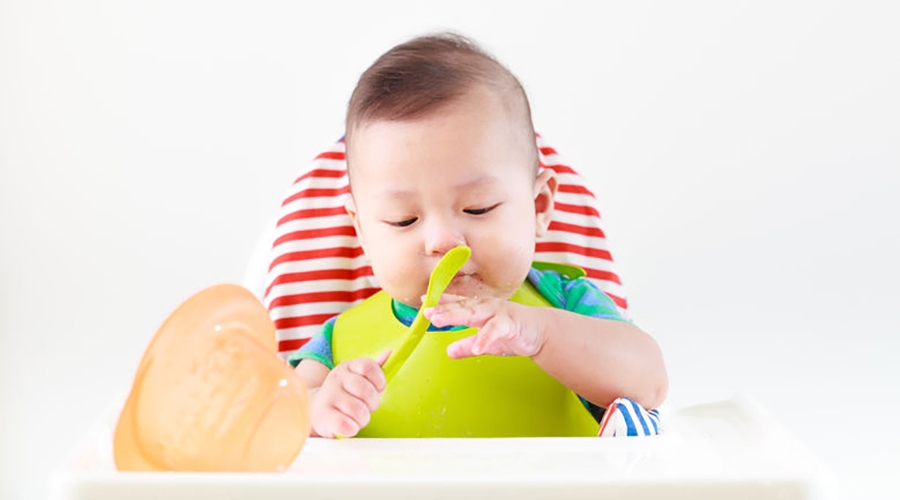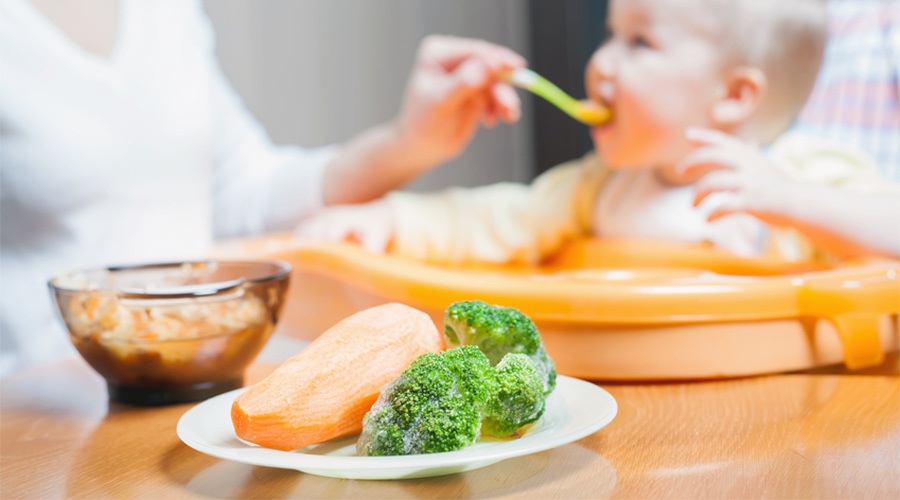[Chewing] We do this behavior every day. Grinding food with our teeth is one of the most important steps in food taste, and there are deep meanings that we have experienced over and over again.
Many parents think that [the baby will not chew without teeth], so they just give the baby liquid food and soft food. In fact, they [delay] the baby. Chewing training can start from the supplementary food addition period and is of great significance to the child.
Why is it better for babies to have chewing training as soon as possible?

Oral muscles and neat teeth
Chewing can fully train the muscles of the baby’s face and mouth and make their tongue more flexible. At the same time, full chewing is also conducive to the development of deciduous teeth, making tooth eruption more orderly.
Language proficiency development
Babies speak single sounds, words, short sentences and whole sentences. The cultivation of these language abilities is actually related to chewing training. As mentioned above, chewing training enables facial muscles to develop, and language expression also needs the support of facial muscles.
If you think your baby speaks late, you should probably think about it. Is the chewing training for your baby in place?
Let food give full play to its maximum value.
An important significance of chewing lies in the preliminary grinding of food to make it smaller and smaller, which is conducive to the digestion, absorption and utilization of food after entering gastrointestinal tract.
When chewing, food continuously strengthens the development of baby’s taste nerves by repeatedly stimulating the protruding taste buds on the surface of the tongue. For babies, chewing is also a process of tasting the natural flavor of food.

Improve concentration
When parents feed the baby, the baby’s attention is often not on the food itself, especially when feeding some food that does not need to be chewed, the baby only needs to swallow mechanically.
On the contrary, chewing can make the baby focus on eating. Through chewing training, the baby can eat more attentively, which is conducive to forming good eating habits as soon as possible.
Promote intellectual development
Is it amazing?
In fact, the purpose of all the above chewing training, whether muscle strength, language ability, taste or concentration, will eventually affect the baby’s intellectual development. Therefore, chewing training can ultimately improve the baby’s intelligence.
Chewing training for babies of different ages is carried out in this way.

Chewing training should follow the baby’s age, starting from the initial stage of supplementary food addition:
From 6 months onwards
About 6 months is the period when most babies begin to add supplementary foods. The main purpose of adding supplementary foods is to supplement the nutritional deficiency of milk, especially iron. The second is to exercise chewing and swallowing ability.
Babies grow and develop rapidly in all aspects in the first year of birth. Timely addition of supplementary foods can exercise babies’ ability to chew and swallow food and digest gastrointestinal tract.
At the beginning of adding supplementary foods, delicate muddy food should be provided. The characteristics of the particles will increase the difficulty of swallowing and digestion, which is not suitable for initial addition.
8 ~ 9 months
After about 2 months of supplementary food addition, the baby’s swallowing ability has matured a lot. Most babies can grind food with their gums. This is the golden time for chewing training.
At this time, it is possible to slowly transition from the paste at the initial stage of adding supplementary foods to the paste-like foods with small particles, such as pumpkin paste, sweet potato paste, potato paste, wax gourd paste and meat paste with particles.
At the same time, this stage can try to introduce finger food, try to let the baby grasp with his own hands, training the baby’s hand-eye coordination ability. You can start with small particles, soluble, soft and rotten, easy to swallow ingredients, such as pumpkin pieces, potato pieces, ripe banana pieces, etc.

10 ~ 12 months
A period when the baby’s chewing and coordination abilities develop rapidly.
The shape of food needs to slowly transition from the paste shape of small particles to the crushed shape of large particles. The addition of finger food can also be advanced to the form of particles and blocks that are slightly chewy and convenient for fingers to grasp.
For example, boiled carrots, egg pieces, egg cakes, small dissolved beans, spaghetti, small wonton, etc.
After 1 year old
After one year old, the baby can eat a lot of things, and the diet pattern is slowly approaching that of adults. Enriching food types and forms is the key to chewing training after one year old.
For example, meat, in addition to all kinds of meatballs and sausages processed by ourselves before, can be directly tried in the form of diced meat, shredded meat and small pieces of meat, so that the processing of food materials is closer to the cooking characteristics of adults, slowly integrates into the family diet, and enriches the taste buds experience of babies.
During this period, the baby should try to eat more by himself, give the baby a small bib and independent tableware, and let him freely choose food and eat independently.
What parents have to do is to dispose the food into small pieces suitable for them and let them eat it themselves.

At first, the baby will definitely scatter food everywhere, making it more difficult for parents to clean up the environment after meals, but don’t be afraid of trouble and let the baby eat by himself. This is a necessary process.
Of course, after the age of 1, the baby is very vulnerable to various external factors, and it is extremely easy to eat well, or be absent-minded or wolf down.
At this time, parents are required to supervise the baby to chew and swallow slowly, not to turn on the TV, etc., so as to eliminate the external interference that affects the baby to concentrate on eating.
